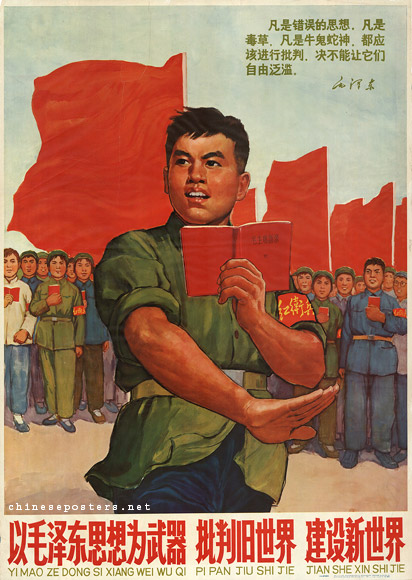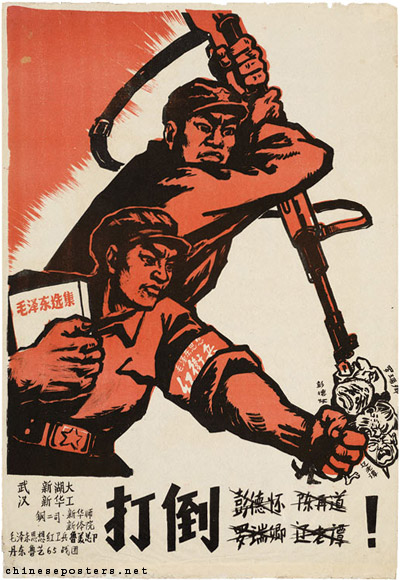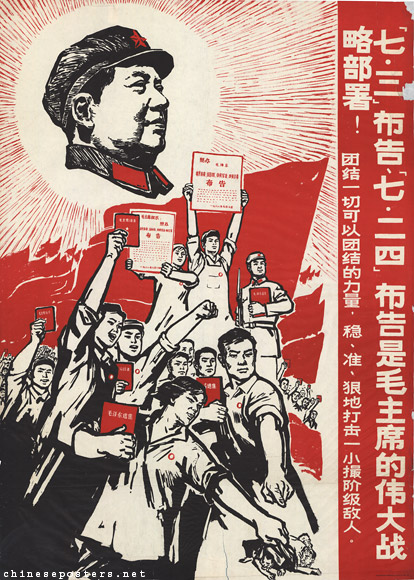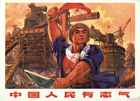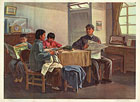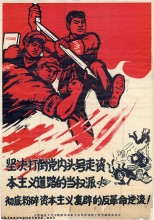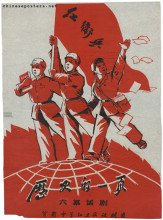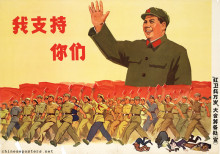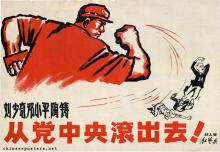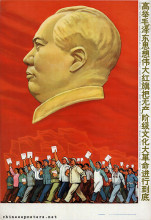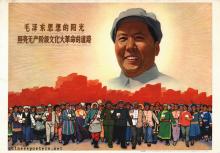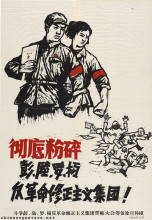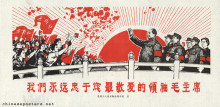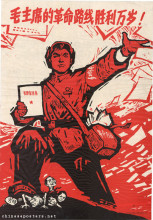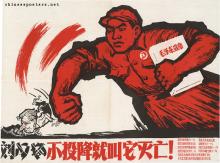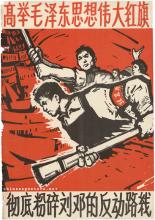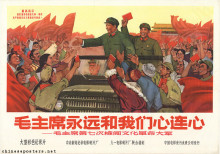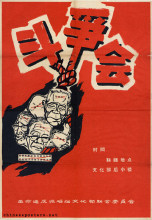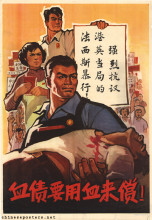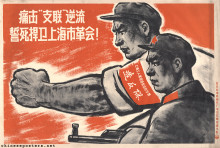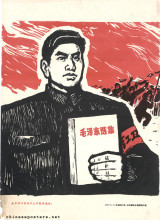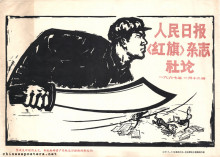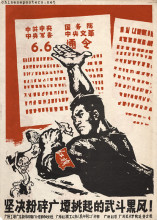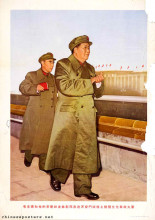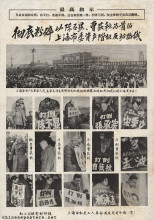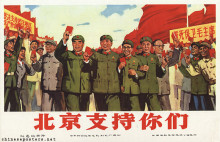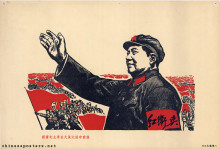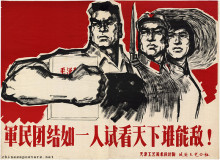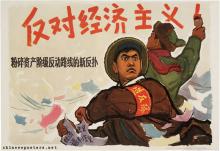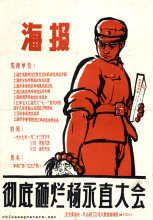Criticize the old world and build a new world with Mao Zedong Thought as a weapon, 1966
The Cultural Revolution (文化大革命, Wenhua Dageming, 1966-1976) was a mass campaign of enormous dimensions. Aside from the general revolutionary high-tide that swept China, the period was marked by a large number of sub-campaigns. Indeed, whenever the situation called for a shift in orientation within the larger framework of the Cultural Revolution, this was engineered by setting in motion a new campaign. Factional struggles within the leadership also functioned as catalysts for campaigns.
Often, these sub-campaigns came so hard and fast that propaganda posters had to serve as the main source of information for the people. With the country in complete chaos, these images which contained clear and unambiguous indications of what behavior and slogans were acceptable at that particular moment, were seen as more dependable than the media. This was in particular the case in those localities where the "excellent revolutionary" situation that prevailed - according to the media, that is - had become completely unintelligible to the innocent bystander.
Overthrow Peng Dehuai, Luo Ruiqing, Chen Zaidao, Liao Laotan!, 1967
Locally produced posters are extremely interesting. Not only because they shed light on the local situation, but also from an artistic point of view. They are often striking in their simplicity of design and coloring, usually done in simple red, white and black, and are somewhat reminiscent of the block prints made in the war years. As such, they bear witness to the urgency of the times.
More posters from the Cultural Revolution years:
Joseph W. Esherick, Paul G. Pickowicz & Andrew G. Walder, The Chinese Cultural Revolution as History (Stanford: Stanford University Press, 2006)
Zhidong Hao, "Cultural Revolution Thinking in China: Its Development and Manifestation in Pingzhou County from Land Reform Onwards", Journal of Contemporary China 27:110 (2018), 295-311
Annie Le Cage, Turbulence in a Clear Sky -- In Beijing at the Dawn of the Cultural Revolution (Paris: Lacurne, 2014)
Julia Lovell, "The Cultural Revolution and Its Legacies in International Perspective", The China Quarterly 227 (2016), 632-652
Roderick MacFarquhar, The Origins of the Cultural Revolution, Vol. 1: Contradictions among the people, 1956-1957 (New York: Columbia University Press, 1974)
Roderick MacFarquhar, The Origins of the Cultural Revolution. Vol. 2: The Great Leap Forward, 1958-1960 (New York: Columbia University Press, 1983)
Roderick MacFarquhar, The Origins of the Cultural Revolution, Vol. 3: The coming of the cataclysm, 1961-1966 (New York: Columbia University Press, 1999)
Roderick MacFarquhar & Michael Schoenhals, Mao's last revolution (Cambridge: The Belknap Press of Harvard University Press, 2008)
Yifan Shi, "Exiting the Revolution: Alternative Ways of Life in Beijing, 1966-1976", Modern China (2022), 1-27, https://doi.org/10.1177/00977004221106101
Michael Schoenhals (ed.), China's Cultural Revolution, 1966-1969: Not a Dinner Party (Armonk: M. E. Sharpe, 1996)
The Great Proletarian Cultural Revolution, by Brain R. Train
Morning Sun, a film and website about Cultural Revolution, by Carma Hinton, Geremie Barmé and Richard Gordon (2002)
